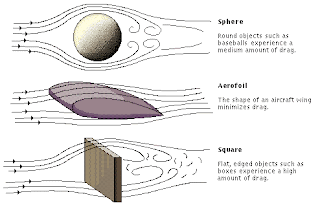Norman’s Seven Stages of Action
Forming the goal:
Print something from a library
computer using a multi-function device (MFD)
Forming the Intention:
Start off with clicking print
with your mouse on the document screen. A pop up window will then appear on the
screen a few seconds afterwards and you have to click Okay to send the document
to the printer. You would have to then walk to MFD and use the keyboard and
touchpad to type in your username and password. After this a window will come
up indicating that you have x amount of print jobs waiting. Click okay and then
the Release button. When the Release screen comes up, select the print job(s)
you would like to print and then press the print button. Your documents should
start printing now. Finally after you’re done, you have to press the access
button and click okay in order to sign out of your account.
Specifying the intention:
In order to send the print job
to the MFD you have to use the muscles in your hand to operate the mouse and
the keyboard. You’d proceed to get out of the chair and using your leg muscles
you’d walk to the printer. Using your finger and hand muscles you’d operate the
keyboard and touchscreen connected to the MFD.
Executing the action:
Follow the intention
specified.
Perceiving the state of the world:
Printed
document comes out of printer
Interpreting the state of the world:
Printing
job was successful
Evaluating the outcome:
Although
the process was long and there were some unnecessary steps the goal was achieved
and the pop-up windows helped move the process along.
Conclusion:
The process was pretty self-explanatory and after using
it once, it’s easy to get the hang of. The pop-ups give you information about
how to release print jobs and how to sign out. The process however is really
long and there are numerous times that you have to confirm that you want to
print which seems very unnecessary. If I say that I want to print something, I
really do mean that I want to print that thing.
Needs Assessment:
Observe: Some students spent less than a minute at the
MFD and walked away with their print job without a hitch. Fewer students spent
a longer time at the MFD and occasionally had to walk back to their computers
and eventually walked away with their print job. The rare student would tinker
with the MFD and the computer they were using and eventually walked away
without being able to print something. One thing that surprised me was how I didn’t
see anyone ask for help when they couldn’t figure out how to use the MFD.
Try: After using the MFD the first time, I never had a
problem with printing anything. I feel like the steps are easy enough however I
never tried doing anything but printing. The people that I watched that copied
things did not seem to have a problem though.
Ask: I did an individual interviews because I felt that
group and expert interviews would take more planning to conduct. Also, I was
interviewing other students and not faculty or staff members so I could afford
to be a somewhat less formal. I was not interviewing people to find out about
the product but rather to find out about other people’s experiences so expert
interviews were not necessary. I chose a few random students at the Clapp
library who had gotten up to print something and who did not look like they
were in a hurry. (I asked to just to make sure.) They stated that they didn’t like
having to wait to use the printer at certain times of the day and that the
printing process was just too long in general. One student also stated that
when something goes wrong it causes a huge inconvenience because students only
know how to use the device to print and maybe copy things. If a problem arose
they would have to call for help because their knowledge about the device is so
limited.
Mind Map
Solutions:
The main problems with the MFDs are that they make it
unnecessarily difficult to print things and that because they are overly
complex. One proposed solution is to include next to the MFD an easy and simple
to read instruction booklet that not only describes how to do certain things
but also had to solve common problems such as a paper jam. Another solution is
to separate the devices so that one device is used to print, another to copy
etc and have multiple printers and copiers around the room to lessen the wait
time. This way the devices would be much simpler and less intimidating looking.
Yet another is to shorten the printing process by getting rid of some steps
such as having to validate the print job more than once.
Pugh Chart:


.JPG)











